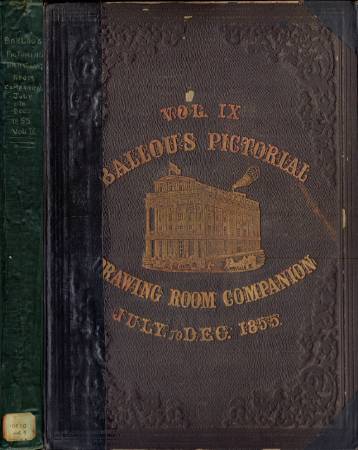
August 4, 1855 (Whole No. 213). Chantrey's Statute of Washington. East India Silk Worm. St John, N.B., South Sea Islanders at Sydney, New South Wales. Train and Co.'s Fire Proof Warehouse, Melbourne, Australia. View of Fort Snelling, Minnessota. City of Muscatine, Iowa. Scenes in Madeira.

Ballou's Pictorial Drawing-Room Companion, Volume IX.
This is the first bound semi-annual volume of this publication. Ballou's
Pictorial was
the successor to Gleason's
Pictorial and
continued with the numbering from that publication. The book is large 4to in
size (11 5/8 x 15 3/4 in). The covers are blindstamped cloth with gilt lettering
and decoration on the front cover. This volume covers all issues from July
through December of 1855. It contains a total of 26 issues (whole numbers
209-234) which cover 416 pages.
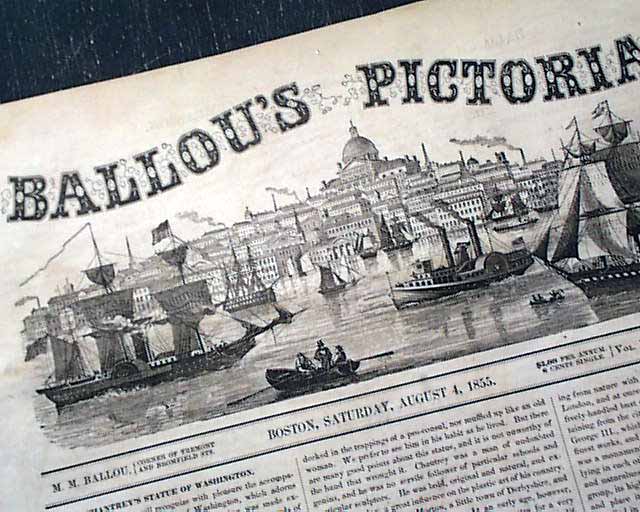 August
4, 1855 (Whole No. 213). Chantrey's Statute of Washington. East India Silk Worm.
St John, N.B., South Sea Islanders at Sydney, New South Wales. Train and Co.'s
Fire Proof Warehouse, Melbourne, Australia. View of Fort Snelling, Minnessota.
City of Muscatine, Iowa. Scenes in Madeira.
August
4, 1855 (Whole No. 213). Chantrey's Statute of Washington. East India Silk Worm.
St John, N.B., South Sea Islanders at Sydney, New South Wales. Train and Co.'s
Fire Proof Warehouse, Melbourne, Australia. View of Fort Snelling, Minnessota.
City of Muscatine, Iowa. Scenes in Madeira.
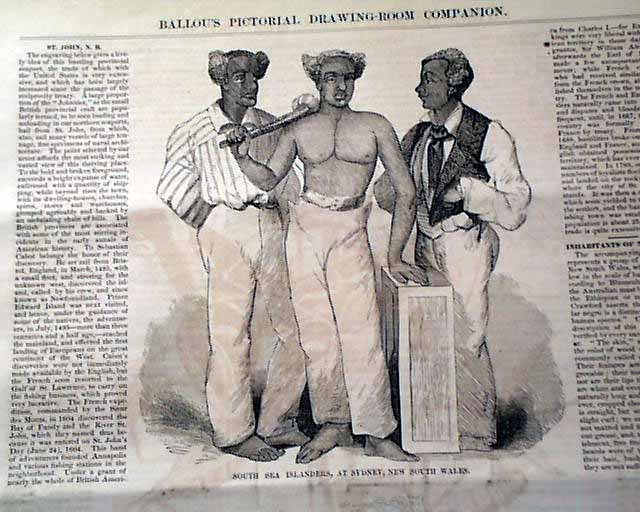
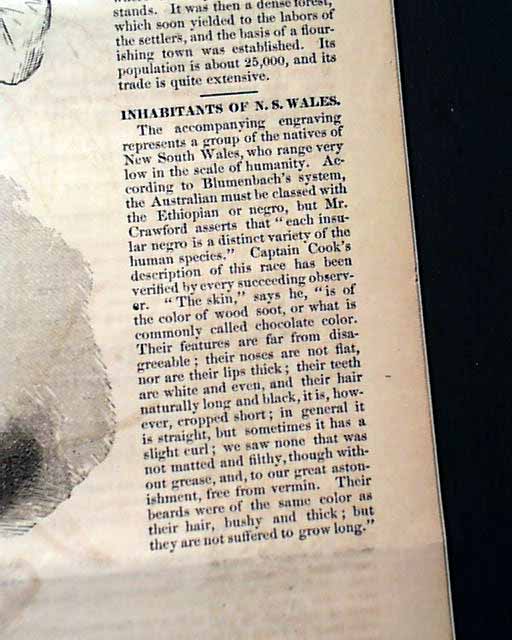
INHABITANTS OF N. S. WALES
The accompanying engraving represents a group of the natives of New South Wales, who range very low in the scale of humanity. According to Blumenbach's system, the Australian must be classed with the Ethiopian or negro, but Mr. Crawford asserts that "each insular negro is a distinct variety of the human species." Captain Cook's description of this race has been verified by every succeeding observer. "The skin," says he, "is of the color of wood soot, or what is commonly called chocolate color. Their features are far from disagreeable; their noses are not flat, nor are their lips thick; their teeth are white and even, and their hair naturally long and black, it is, however, cropped short; in general it is straight, but sometimes it has a slight curl; we saw none that was not matted and filthy, though without grease, and, to our great astonishment, free from vermin. Their bears were of the same color as their hair, bushy and thick; but they are not suffered to grow long."
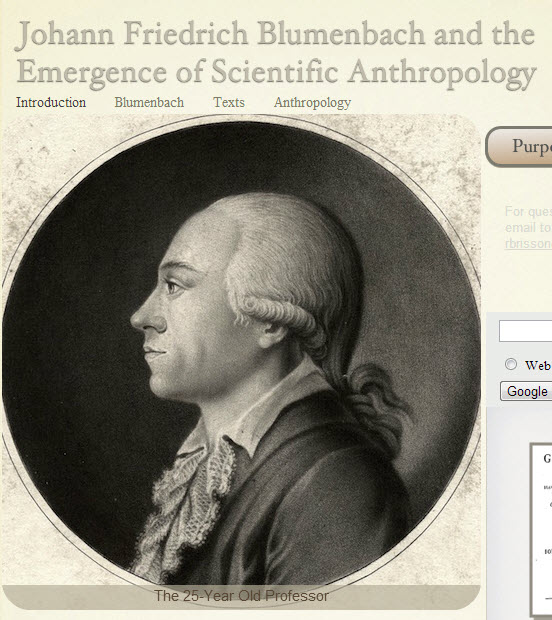 BLUMENBACH'S
LEGACY IN THE HISTORY OF SCIENCE
BLUMENBACH'S
LEGACY IN THE HISTORY OF SCIENCE
Frequently cited in the literature as the "Father of Scientific Anthropology", the comparative anatomist Johann Friedrich Blumenbach played a formative role in establishing anthropology as a scientific discipline in the late 18th and early 19th centuries. He wrote "On the Natural Variety of Mankind" in 1776, the same year as the American Declaration of Independence. His scientific image of man would go on to form the basis of modern racial theory.
From the late 18th century to the publication of Darwin’s On the Origin of Species, the stamp of Blumenbach’s work can be found in the thought of several generations of early anthropologists in the German-speaking states, Great Britain, France, the United States, and in several other countries in Europe.
Blumenbach divided the human species into five races in 1779, later founded on crania research (description of human skulls), and called them (1793/1795):
In his dissertation Blumenbach mentioned the name of "Simia troglodytes" with a short description for the Common Chimpanzee. Hense the term "troglodyte" is used to accuse a person of being primitive.
Since Blumenbach's work most antrhopoligists break the races into three groups, White, Black and Yellow, classifying all others as combinations of these three.